2016 Mitsubishi I-MiEV Review
High-end smartphones are seriously expensive: $650 for the latest iPhone, $600 for the newest Samsung Galaxy, $550 for a Droid Turbo.
And yet there is no shortage of Android phones that can be purchased — unlocked and contract-free — for less than a hundred bucks. A cheap Android may not be as slick as a bleeding-edge iPhone, but it’ll do the same basic stuff for a lot less money.
It’s a similar story for electric vehicles. Most are in the $28,000 to $40,000 range, and if you want a Tesla Model S (the iPhone 6 Plus of EVs), you’re going to spend at least $74,000. Why can’t there be an EV equivalent of the cheap Android phone.
As it happens, there is: The Mitsubishi i-MiEV (“eye-meev”). Last year, Mitsubishi slashed the price of their elliptical electric by over six grand, dropping it to $23,845 (including delivery). Factor in the federal tax credit of $7,500, and the price drops to $16,345 — about what you’d pay for a Hyundai Accent.
So how did the i-MiEV wind up as America’s least-expensive electric car? And what’s it like to drive a cut-rate EV?
FAST FACTS
| Engine: | 49 kW (66 hp) electric motor |
| Transmission: | Single-speed reduction drive |
| Battery: | 16 kWh lithium-ion |
| Charging: | 110V/8-12A (14-22 hours), 240V 3.3 kW (6-7 hours), CHAdeMO fast charge ( |
Leftover goods
When the i-MiEV arrived in 2012, it was one of the most energy-efficient EVs on the market. But EVs, like smartphones, change quickly. Nissan revamped their benchmark Leaf for 2013, increasing its efficiency and dropping its charge times. Newer electrics like the Volkswagen e-Golf and Kia Soul EV eclipsed the i-MiEV in terms of gadgetry and range (the latter never an i-MiEV strong suit). And cool as it may look to some eyes (including your author’s), the i-MiEV’s unusual styling may not have done it any favors.
Rather than revamp the i-MiEV, Mitsubishi put it on the discount rack and that was a sensible move.
It’s no rocket ship, but it is a real car
Though the i-MiEV is a bit basic, it is a proper car and not just a glorified golf cart. Its 49 kW motor translates to 66 horsepower and 145 lb-ft of torque, and while that may not seem like much, consider that the i-MiEV is a flyweight by EV standards — at just under 2,600 lbs, it weighs around 400 lbs less than the similarly-sized Fiat 500e and Chevrolet Spark EV. And while the i-MiEV isn’t anywhere near as quick as the Spark (a rocket ship among EVs), it has no problem zipping through traffic and merging onto the freeway. Top speed is 80 MPH, and but for the lack of cruise control, the i-MiEV cruises steadily at highway speeds, though if you want to stretch its battery as far as possible, you’ll stick to local roads. Unlike fuel-powered cars, EVs are more efficient at lower speeds.
Regenerative braking uses the motor as a generator to recharge the battery, creating resistance that slows the car. Stepping on the brake pedal automatically mixes regenerative and normal [friction] braking.
Brake mode provides the same power output as Drive, with stronger regenerative braking — in fact it’s so strong that we found we could pretty much drive the i-MiEV using only the accelerator, though it’s important to keep in mind that the i-MiEV’s brake lights only come on when you step on the brake pedal.
Thin wrapper, impressive packaging
And what about the size? Well, the i-MiEV is certainly tiny — and a bit tinny. The thin doors close with a clink rather than a clunk, and we were worried about the impact (pun intended) on collision protection. In Federal side-impact tests, the i-MiEV scored a full five stars for the side-airbag-equipped front seats but only two stars for the unprotected back seat.
That said, it’s hard not to be impressed by the interior packaging. Like the gas-powered version, the rear-wheel drive i-MiEV mounts the bits that make it go (motor, reduction gearing, control gear) under the trunk, while the battery is mounted under the floor, an arrangement that frees up a surprising amount of passenger space. Front-seaters get lots of headroom and a tall driving position that makes the i-MiEV feel bigger than it is.
Mitsubishi did widen the i-MiEV for the American market, which we appreciate. We’ve driven the Japanese-spec car, and we were constantly bumping elbows with our passengers.
The back seat, if not exactly generous, is surprisingly tolerable, especially when you consider that the i-MiEV is nearly a foot and a half shorter than a Honda Fit. Cargo space is a grocery-and-gym-bag-friendly 13.2 cubic feet, which expands to 50.4 cubic feet with the back seats folded down. The i-MiEV’s maximum payload is 750 lbs, including driver and passengers.
Fit-and-finish are 2012-era Mitsubishi, meaning lots of shiny, cheap-looking plastic but a simple and sensible control layout. Storage space is wanting and there are a few ergonomic snafus, notably a fiddly shifter and oddly-placed seat-heater switches. The biggest annoyance is the lack of auxiliary input jack, USB port or Bluetooth. The former is completely M.I.A. and the USB and Bluetooth combo is only available with the optional navigation system, which includes a backup camera and is priced at a stiff $2,000.
Functional, not fancy
For all that, we found the i-MiEV’s simplicity to be rather refreshing. Most EVs have fancy full-color displays that give detailed information about range, power consumption, and how to get more miles per charge. Not the i-MiEV. In fact, its instrument panel is pretty much identical to the gas-powered vehicle on which it is based (a Japan-only city car called the “i”). There’s a pwer meter in place of the tachometer, the battery gauge is the gas gauge with a different symbol, and the range is shown in the trip computer’s distance-to-empty display. Elegant? No. Effective? You betcha.
For the most part, we weren’t bothered by the lack of electronic fireworks, but we did miss the convenience of a charge-scheduling app. One way EV owners save money is by charging their vehicles late at night when power rates are cheaper. Most EVs support such scheduling through an on-board program or a smartphone connection. Alas, not the i-MiEV. Instead, Mitsubishi provides a small keychain remote that lets the owner set a delay before charging starts (or stops). Having to manually set the charging delay every single night seems like it would get very old, very fast.
Range and charging: Some good, some bad
We mentioned earlier the i-MiEV’s range; the EPA rates it at 62 miles, which puts it well behind the Nissan Leaf (75 miles), VW e-Golf (83), and Kia Soul EV (93). When it comes to EVs, your mileage will definitely vary; in-town driving stretched our range above 70 miles, while highway runs with the A/C (or the heater) dropped it closer to 60. Bear in mind that most EV owners charge at home, so they have a full “tank” every morning. 60 miles per day equates to 21,900 miles per year – nearly double what the average American drives.
One of the i-MiEV’s weak points is its 3.3-kilowatt on-board charging gear, which takes six to seven hours for a full charge using a 240-volt EV charger. Newer EVs use 6.6 kW equipment, which drops the charge time to four hours. Like most EVs, the i-MiEV comes with a 110V charger that plugs into a
And if you’re on the road and find yourself low on juice, the i-MiEV supports DC fast charging, which can juice the battery to 80 percent in less than half an hour. There are two types of quick-chargers out in the wild – unlike 240V chargers, the connectors have not yet been standardized – and the iMiEV uses the CHAdeMO port. Since CHAdeMO is also used by the Nissan Leaf, which is the best-selling EV in the US, compatible chargers are fairly easy to find. Fast charging works as advertised: We ran the i-MiEV down to empty (with four miles of range showing). The fast charger showed the battery at 14 percent and juiced us up to 82 percent in 19 minutes 11 seconds. The i-MiEV automatically stops at this point; you can run the charger longer, but the charging rate slows as the battery fills. Another 15 minutes on the juice got us to 95 percent with 71 miles of range showing. We should mention that Mitsubishi recommends only using quick charging in a pinch, as it can shorten battery life.
A good deal for what you get
We’ve talked about the i-MiEV’s shortcomings, but we still think it fulfills its mission nicely. Though it may lack some of the fancier gee-gaws, it delivers the full EV experience and let’s not forget that it entails dirt-cheap and virtually maintenance-free driving. The i-MiEV’s maintenance schedule calls for inspecting the car and changing the cabin air filter every 15,000 miles. That’s it.
The Verdict:
Yes, the i-MiEV comes up a bit short on some nice-to-haves, but it also comes up short on price – it costs about $3,500 less than a Chevrolet Spark EV, $6,000 less than a Nissan Leaf, and $108,000 less than a top-of-the-line Tesla Model S. Like a cheap Android phone, the i-MiEV will do most of what these other EVs will do for a heck of a lot less money. Sounds like a good deal to us.
LOVE IT
- Low price -- not just by EV standards, but by small-car standards
- As green as it gets
- Cheap to fuel and virtually maintenance free
LEAVE IT
- No app to schedule charging times
- USB and Bluetooth are (expensive) options
- Range is shorter than competing EVs
More by Aaron Gold



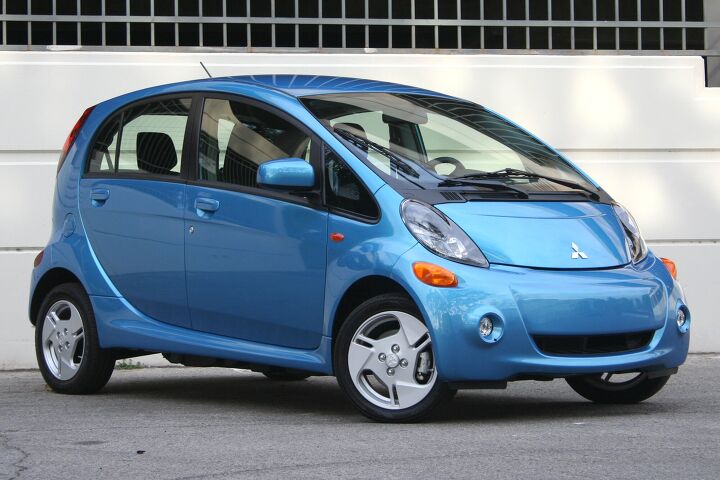


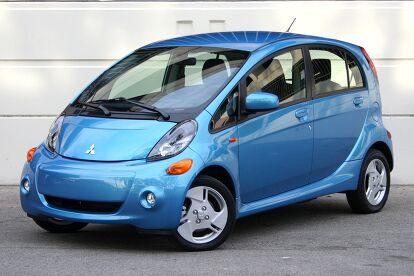




























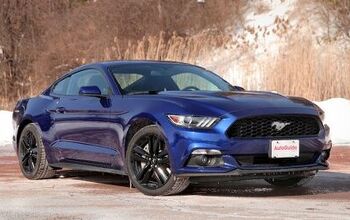
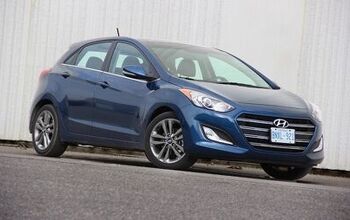

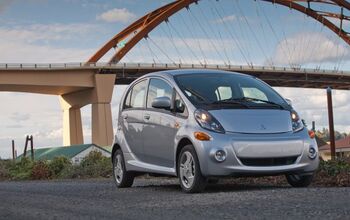
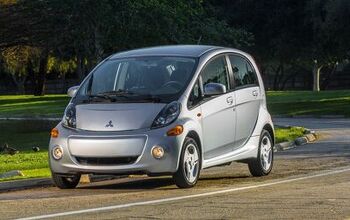



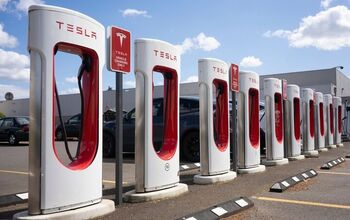


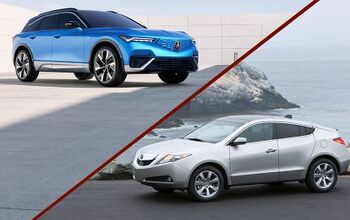
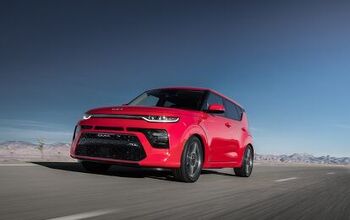




Comments
Join the conversation
I've had my MeVee (as I call it) for 18 months now and have not had a single bit of trouble with it. I leased it for $84 a month and that has been it. I'm really enjoying the car. It is quick, has a fantastic turning radius, has more than enough room for my wife and I (and dog), and have used the hatch to transport a push lawnmower (still in the box) and a Hope Chest (my wife's Christmas present). With about 1 1/2 years left on the lease I'll continue to enjoy it while considering another lease on the 2016 model.
I've had my i-Miev for three years and this is one of the most truthful articles I've read about the car. It's cheap, no frills, but it only costs me 3 cents per mile and gets me there and back again. I get a range of just over 70 miles in the summertime, and it goes down to about 45 on sub-freezing days in January with the electric heater running. Once you get some experience with the car and learn how far it can go, then range anxiety is gone, and smiles everywhere as you zoom past all those cars lined up to drink gasoline.